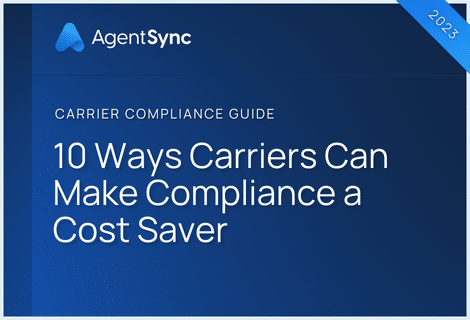

When it comes to insurance data management, the new standard is for carriers, agencies, MGAs, and MGUs to validate data against a source of truth and integrate this information across the other apps in your entire digital ecosystem.
Yet, insurance businesses often find themselves manually fact-checking, working with multiple panes side-by-side to compare data that should be cohesive and uniform, and doing other time-consuming work to validate data that’s in a system that already promises to do it for them. If that describes your team’s workflow, then what you have isn’t an insurance data validation software. It’s an insurance data repository.
First, a quick look at definitions:
What’s an insurance data repository?
Insurance data repositories are software or digital business systems that house information about your producers, clients, products, or other pieces of your business in a way that protects data for later use or record-keeping.
What’s “data validation” in insurance?
Data validation is a systematic process of verifying data points and proving them to be true, or giving you the means to correct them if not. Data validation solutions take this a step further to validate data against a source of truth, and use automations and integrations to surface the correct information in other tools.
The difference between data validation and a data repository
The difference between a data repository and a data validation software comes down to their usability. One is for storage, the other is for use. A repository is fine if what you need is occasionally available point-in-time data or basic recordkeeping. But not if you need up-to-date, always usable data.
It’s the difference between what gets buried in the back of the pantry vs. what’s on the kitchen counter: You can see when the bananas go bad in real time. But it’s not until spring cleaning that you’re going to realize those canned veggies expired a while ago.
No problem, you might think, because you have software to manage your data. So there. Case closed. But if your staff spends time managing your management system, you might not have “living data” the way you imagined. Check out these following clues to determine whether you have a data validation software or a data repository tool.
5 signs your software is a data validation solution
1. Data validated against an objective source of truth
If your software automatically checks your data against a source of truth, you’re likely working with a legitimate data validator. Granted, there’s some nuance here: If the source of your data only synchronizes and provides verification in a cadence that’s measured in weeks not hours, your systems start to slide closer to a data repository. Even worse, if your data validation’s “source of truth” is itself out of date or potentially inaccurate.
Software solutions that synchronize data on an hourly or daily basis are far more effective in ensuring your information stays up to date, relevant, and, well, valid.
2. Data synchronizes both ways, allowing users to control their data
Having a one-way flow of information is a start, surely, but what about when you know you’ve gotten information “from the horse’s mouth,” so to speak? For instance, if you’re working with an insurance producer who informs you they’ve moved across their city to a larger residence, do you have a way to ensure the information can be passed back to that source of truth quickly and effectively with as little double-work and retyping as possible?
Synchronizing with a source of truth – for example, for a compliance management or licensing system, synchronizing information with NIPR – is most useful when it’s not only a static data draw, but a dynamic flow of information that allows all parties to maintain accurate records.
3. Data integrated across software ecosystem
If you have a single system that’s accurate, congratulations. That’s a single system. But it won’t stop you from sending mail to the wrong address, submitting an errant amount for commission, paying commission to producers who aren’t appointed appropriately, or any other number of errors.
For data validation to matter, you need that correct data to populate across your other software, from your client relationship management system (CRM) to your commission tracking system and everywhere in between. So, to ensure your various solutions aren’t acting as merely repositories, you’ll need to spend the resources on integrating them upfront for an effective, collaborative approach to surfacing correct, living data, across every piece of your ecosystem.
Pro tip: You can also invest in data validation solutions that integrate with your other systems out of the box.
4. Software flexible to accommodate structural change
Context matters. Not only does data change for individual users, but the systems and assumptions that underlie the data change.
For example, consider a state that’s historically operated based on a state-maintained user portal to submit fee payments, appointment renewals, and other information. What if that state transfers its operating procedures to be more reliant on the National Insurance Producer Registry (NIPR) and the National Association of Insurance Commissioner (NAIC)-associated State-Based Systems platform (much like Hawaii, Massachusetts, and Idaho did in 2022)?
Often, this change necessitates tweaks to some nuances of state procedures. If your management solutions aren’t flexible enough to maneuver around these sorts of structural changes, then the flow of information will get more cumbersome and less useful over time.
5. Clear line of sight into accuracy and completeness of data
Do you have records that are missing key information? If the list of records that still need to be verified, updated, or completed lives on a spreadsheet or in someone’s head, then you’re still missing out on true data validation.
Data validation software built on modern infrastructure can surface how complete your data is and flag potential problems before they become actual problems. In fact, unlocking your own data to use sophisticated business intelligence in your decision-making is a key premise for investing in validation tools to begin with.
5 signs your software is a data repository tool
1. System relies on manually retyping data across software
Raise your hand if you think hiring people to type and retype the same information – name, address, Social Security number, national producer number, business address, phone number – across multiple databases is an effective use of a company’s money or a person’s time.
(Please, please tell us you didn’t raise your hand.)
Unfortunately, a lot of companies have invested money and human time into having tech stacks that do essentially that. They’re not full stack solutions, they are databases, requiring people to enter records with manual keystrokes and the unfortunately high error rate of manual data entry.
2. Validation happens manually or automatically on a periodic basis – monthly, quarterly, etc
If your staff spends time periodically analyzing your internal records against a spreadsheet, external source, or other fact-checking mechanism, you’re likely working with a data repository. Even software that purports to analyze information in a systematic way against a source of truth but only does so on a cadence that’s measured in weeks or months leaves a lot of guesswork and assumptions.
True data validation software allows users to make a foundational assumption that the underlying data is accurate and up-to-date, something they just can’t do if the data is actually only validated periodically or incidentally. Instead, that’s a data repository.
3. The system is a closed loop
When your pieces of technology don’t talk to each other, they can be dynamic in their own ways, but, ultimately, strong data silos will keep them functionally separate. Without integrations that enable the free flow of current and valid information, a software is a place to organize information, but not truly use it.
That makes siloed systems a great series of data repositories, each housing information about your insurance business that can be quite useful. But it also means you need hands-on time and attention from a team of people to surface the information alongside relevant data from other sources to give it context and meaning.
4. Data is a black box of insight
Have you ever worked with a team who responded to a question with “Well, the information is there, but…”? That’s a major flag that your management software is a repository, storing data until someone has the time and priority of making it useful.
Solid business decision-making relies on making use of data in real-time to unstop bottlenecks, to determine new territories to conquer, to find paths of least resistance in expanding lines of business. Yet, if your data is locked in repositories, it could take tens or hundreds of manual people hours to assemble and organize the data into something that can provide those insights.
5. The system is a spreadsheet
Spreadsheets are the O.G. of data repositories. And every industry, insurance in particular, owes them a great debt for the amount of repositorying they’ve done.
Spreadsheets have a number of uses for holding data, for organizing it in 2D, and for analyzing it to some degree. But it’s time to acknowledge, if your data needs are beyond that of a repository, it may be time to upgrade past a spreadsheet.
When it comes to producer management, specifically in regard to producer licensing and carrier appointment processes, AgentSync is all-in on data validation solutions. If you’re ready to move from repositories to true data validation for your producer compliance processes, see how AgentSync can help by scheduling a demo today.

